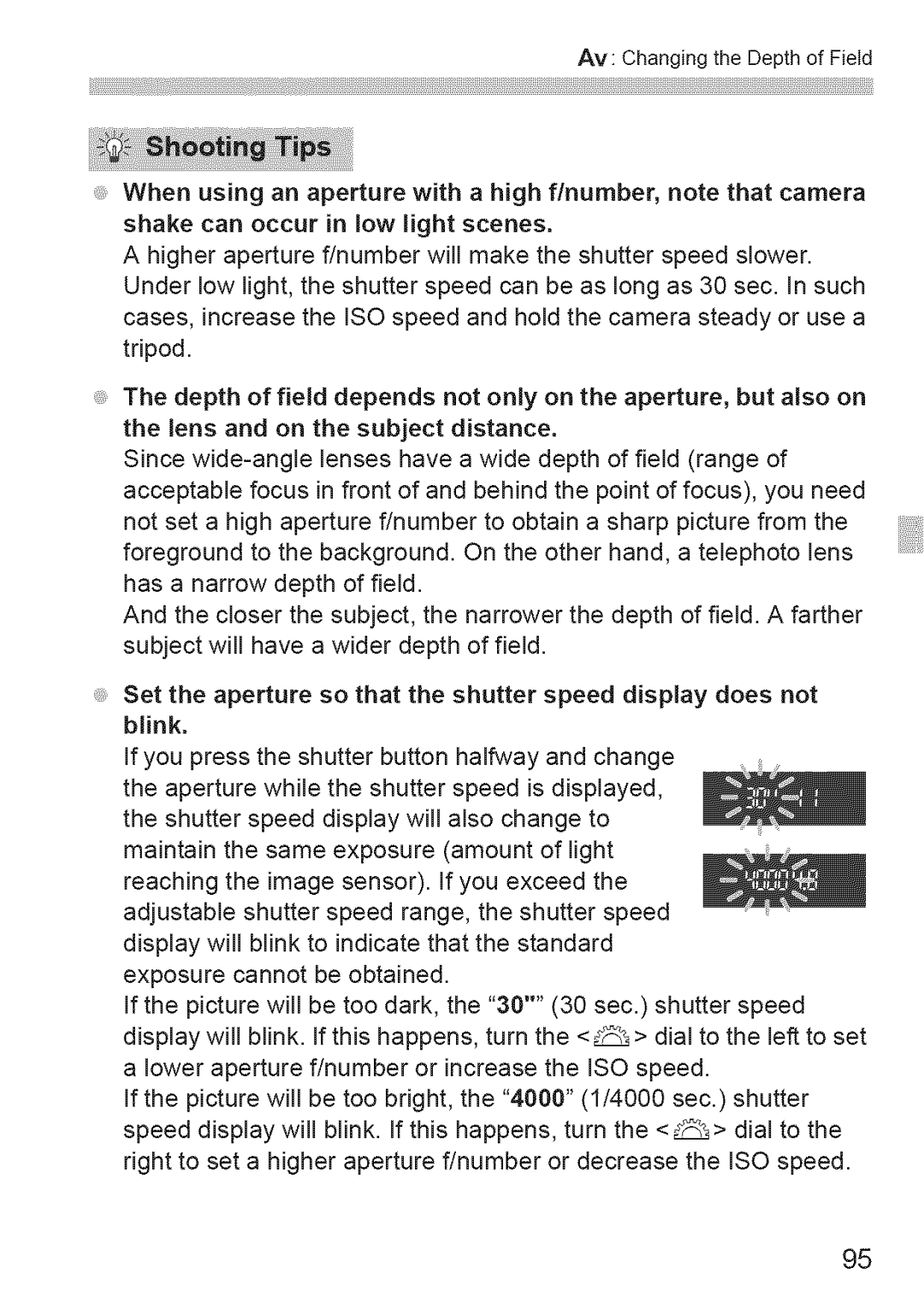
Av:ChangingtheDepthofField
When using an aperture with a high f/number, note that camera shake can occur in low light scenes.
A higher aperture f/number will make the shutter speed slower. Under low light, the shutter speed can be as long as 30 sec. In such cases, increase the ISO speed and hold the camera steady or use a tripod.
The depth of field depends not only on the aperture, but also on the lens and on the subject distance.
Since
And the closer the subject, the narrower the depth of field. A farther subject will have a wider depth of field.
Set the aperture so that the shutter speed display does not blink.
If you press the shutter button halfway and change
the aperture while the shutter speed is displayed, the shutter speed display will also change to maintain the same exposure (amount of light
reaching the image sensor). If you exceed the adjustable shutter speed range, the shutter speed display will blink to indicate that the standard exposure cannot be obtained.
If the picture will | be | too dark, | the | "30"" | (30 sec.) shutter | speed | ||||||
display will blink. | If this | happens, | turn | the < _ | > dial to the left to set | |||||||
a lower aperture | f/number or | increase |
| the | ISO speed. |
| ||||||
If the picture will | be | too | bright, | the "4000" | (1/4000 | sec.) | shutter | |||||
speed display will blink. | If this | happens, | turn | the | < _ > dial to the | |||||||
right to set a higher | aperture | f/number | or decrease the ISO speed. | |||||||||
95
